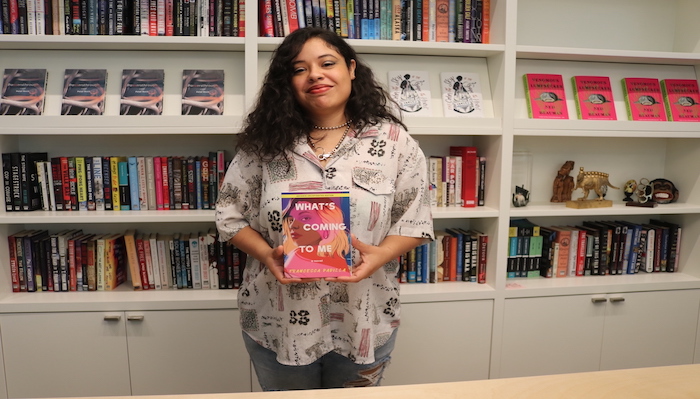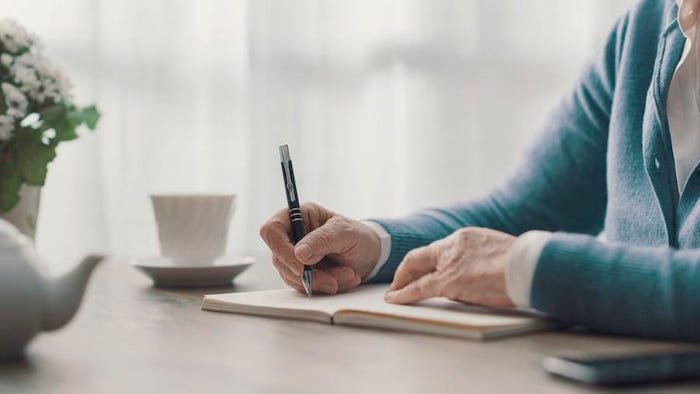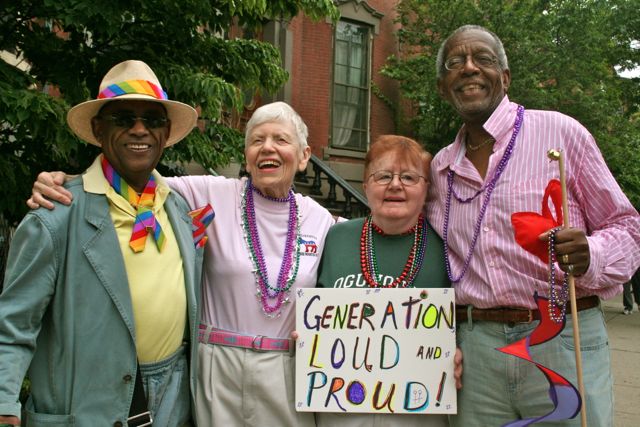Padilla’s book talks about grieving someone who is still alive.

From nine to five, Francesca Padilla works on community engagement in health and human services; but as the New York City born and raised that she is, Padilla would never be able to settle for just one occupation. In her spare time, or whenever she finds time in between her personal life as a mother of two young children, Padilla is a novelist.
She has been a writer since she can remember, and in the beginning of August her debut novel, What’s Coming to Me, was published by Soho Teen. For the first time when she was in college, Padilla had the thought of writing a book about grief, family and illness — concepts that were common to her.
The inspiration for it originally came from Padilla’s mother, who was sick for most of her life; with multiple chronic illnesses throughout the years, their lives changed when her mom was diagnosed with an advanced stage renal disease while Padilla was in middle school. Her mother had to stop working and they became even more low-income than they already were.
“You are close to somebody and you know that you are going to lose them one day but you don’t know when,” she said.
With complicated feelings about her mother’s illness and never having seen a book that talked about that kind of experience, she was determined to write her own. All the books she found that talked about family grief, the relatives were already dead — which wasn’t Padilla’s case. She wanted to write about the feeling of anticipatory grief.
“Anger looks different and grieving looks different in different people,” she said. “Sometimes you look at someone and you think they are angry, but they are actually just hurt and sad.”
The first characters and the main idea for the novel came only a few years after she graduated in creative writing from State University of New York Purchase College, in 2007. After some troubled years in high school, she stopped going to classes since nobody was watching her; Padilla had a great time in college studying what she was interested in — which she almost didn’t attend because she was considering joining the Navy.
After four draining years of constant writing in college, Padilla thought she would never be able to write again. She had the inspiration for the book, but not the energy to actually do it. She purposely chose to distance herself from the publishing world and started getting involved with her other passion: non-profits.
One day a friend of Padilla asked her to read the book she was writing, and Padilla got inspired again. She wanted to write her own story and that’s when the first version of What’s Coming to Me was born, around 10 years ago. The main characters were the same, but Padilla explained the plot was completely different.
Since then, the years have passed and many changes have happened in Padilla’s life. Her mother died, she published a book that didn’t sell, she had children, and she moved from NYC to Rochester. The book didn’t seem like a priority to her anymore, until recently, when her creativity flourished and she had new ideas for the novel. She knew it was the time to give it another chance.
Padilla’s adult novel tells the story of Minerva, a girl whose life is apparently falling apart because her mom has been hospitalized many times recently; Minerva is sort of abandoned. After being kicked out of school, the only thing happening in her life is her job at an ice cream stand at a little seaside town in Long Island.
Even though she needs the job because she is low-income and living on her own, she hates it. Her boss is predatory and mean, and Minerva’s coworkers don’t like her very much from what she thinks.
One day, an armed robbery happens in the ice cream stand, bringing up rumors of the possible existence of illegal money or treasure hidden in the property. Minerva then teams up with her neighbor friend, who is also her drug dealer, to find the money and try to make her life better.
The journey that follows is all about Minerva reconnecting with her friends and family, and dealing with complicated feelings about her mother’s situation.
Always drawn to beach towns, she grew up loving and going to the beach a lot, especially in the Dominican Republic. Originally, the story was set at Rockaway Beach, Queens, where Padilla used to hang out in high school. She felt inspired by the differences between the greedy and low-income versus the high-income parts of the town. It felt right to set the story in a place with a sense of small town but that was still in New York City.
She then ended up changing the scenario for an imaginary seaside town called Nautilus, which is supposed to be further down Long Island, in Suffolk County. She felt that Rockaway was changing so quickly she couldn’t keep up with it in her story — and she also didn’t want to; creating a whole new place seemed like a nice alternative to which she could use her creativity.
Along the years that she was writing the novel, many other changes were made. From characters to key moments. When she was writing the first version her mother was still alive; but years later, during the second version, she had already passed. Padilla highlights how this marks a division in the book where the first part is about illness and the second, grief.
“I like when people comment on the book in such a way that they know what I was trying to do, when they get it,” she said.
More than just the experience with her mother’s illness and the passion for the beach, the book is a little bit of all the experiences Padilla has had throughout her life. From mean bosses to working at an ice cream stand, this is the most autobiographical novel ever.
Honoring the place she was born, Padilla is a walking melting pot. Her parents immigrated from the Dominican Republic to the United States, but, as she likes to say, they weren’t the stereotypical Dominicans. With a hippie artist father and a mother who never forced her to do anything, including speak Spanish; Padilla grew up with a lot of freedom. Although she wishes her Spanish was better now because she didn’t practice it for a long time, she appreciates her mother for all the autonomy she gave her.
When she was a child, she used to go every other summer to her parents’ home country. However, after her mother got sick and her father was incarcerated, she didn’t visit for 10 years, until her mid twenties, when she was able to afford plane tickets.
In What’s Coming to Me, she wanted to explore the different side of the Latinx-American experience. The diversity of the book is how Padilla grew up, as the main character doesn’t speak Spanish or eat rice and beans every day.
As she describes her style as alternative, it is characteristically from where she grew up, in Brooklyn. Padilla also highlights how she wasn’t like the other Latino kids growing up. A rock enthusiast and with not many Dominicans around in her neighborhood, she had more contact with people from West India, Middle East, Jamaica and other cultures.
In the end, it was up to Padilla to create her own identity. Just like her hometown, she is a little bit of everything.
Complete Article ↪HERE↩!






